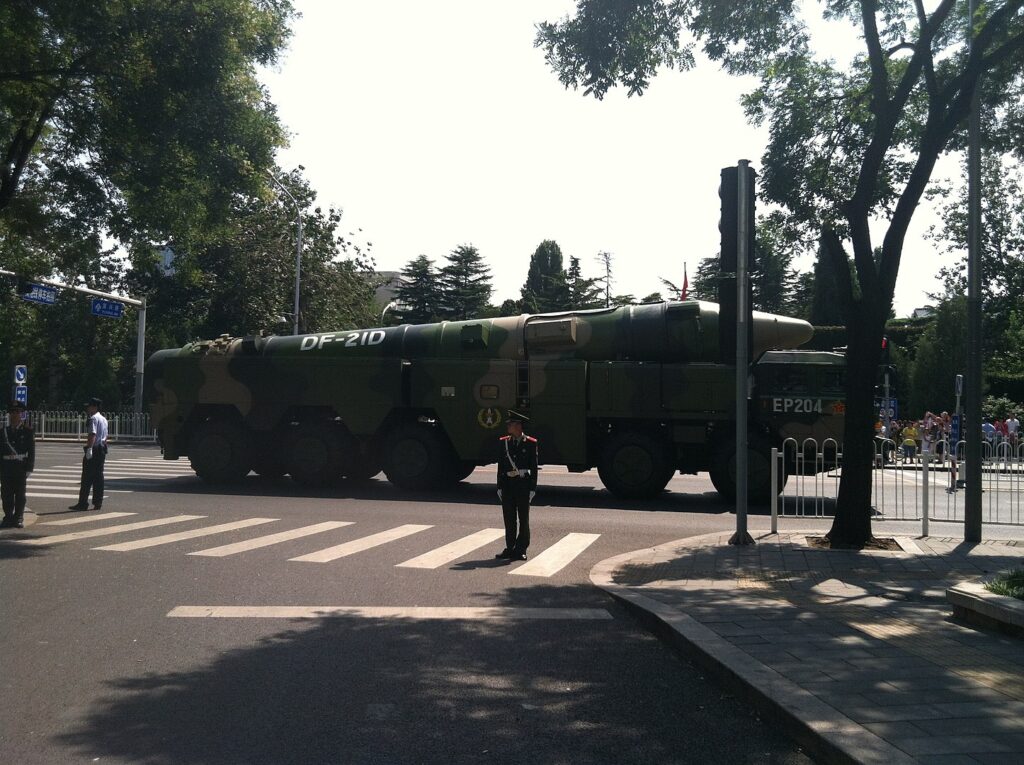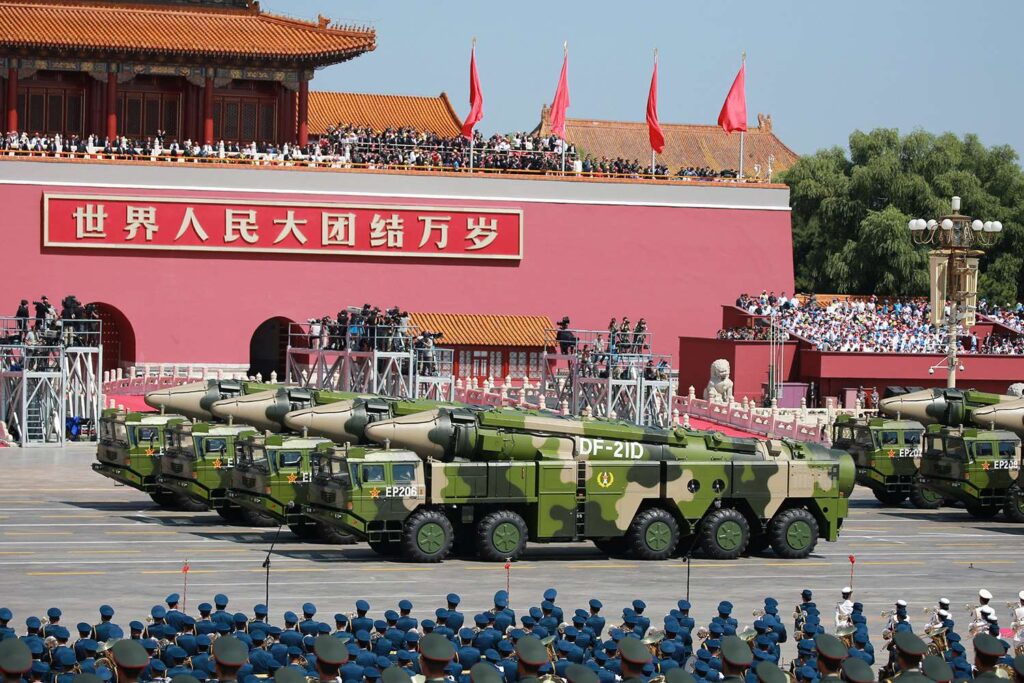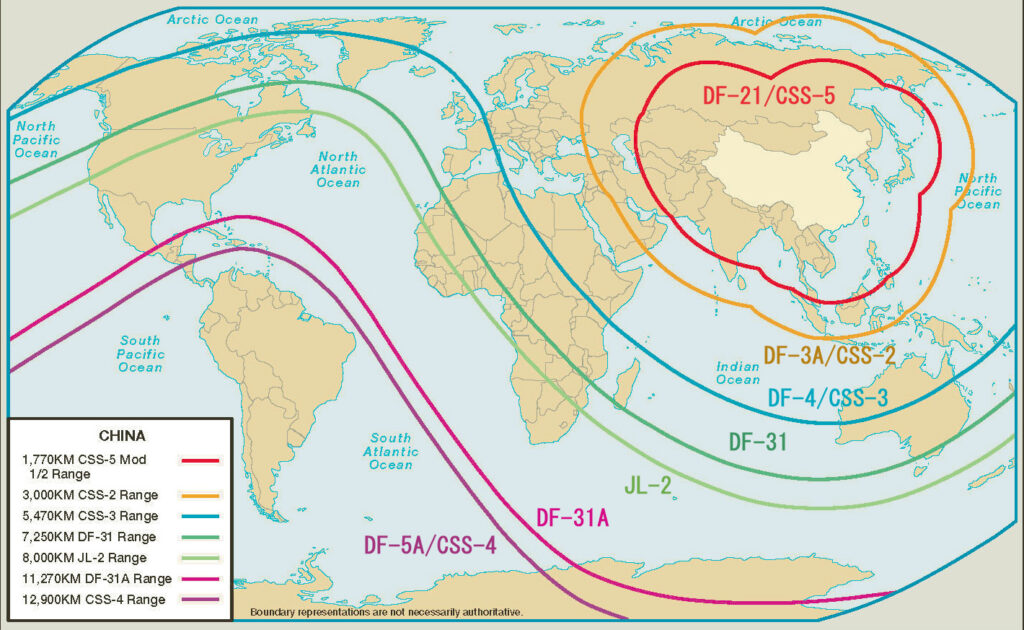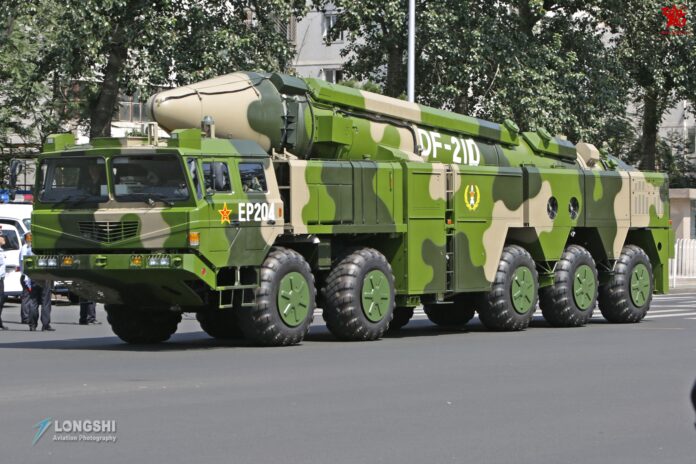DF-21D ASBM is the cornerstone of the Chinese A2/AD strategy
China’s naval modernization effort, which forms part of a broader Chinese military modernization effort, has transformed China’s navy into a much more modern and capable force. As a result, China’s navy is, by far, the largest of any country in East Asia. Moreover, within the past few years, it has surpassed the U.S. Navy in numbers of battle force ships (meaning the types of ships that count toward the quoted size of the U.S. Navy), making China’s navy the numerically largest in the world.
China’s navy is viewed as posing a significant challenge to the U.S. Navy’s ability to achieve and maintain wartime control of blue-water ocean areas in the Western Pacific. Modernization effort encompasses various platform and weapon acquisition programs, including anti-ship ballistic missiles (ASBMs). Consistent with its goals, China wants its navy to be capable of acting as part of a Chinese anti-access/area-denial (A2/AD) force, a force that can deter U.S. intervention in a conflict in China’s near-seas region over Taiwan.
ASBM is the cornerstone of the Chinese naval strategy to pose a comprehensive threat against the Carrier Strike Group. According to its military understanding, CTS is the center of gravity (COG) of the U.S.Navy. Therefore, China wants to keep CTS as much as possible far from the mainland in any military confrontation.

According to the Department of Defense (DOD) Annual Report to Congress, China has fielded approximately 200 ASBM launchers and more than 200 missiles. In conjunction with the reconnaissance satellites, the PLAN’s expanding networks of skywave and surface wave over-the-horizon (OTH) systems provide warning and targeting capabilities at an extended distance from China to support long-range precision strikes, including employment of ASBMs.
DF-21D threat
China reportedly is fielding two types of land-based ballistic missiles with a capability of hitting ships at sea—the DF-21D (CSS-5 Mod 6), a road-mobile ASBM with a range of more than 910 nautical miles, and the DF-26, a road-mobile, multi-role intermediate-range ballistic missile (IRBM) with a maximum range of 2,160 nautical miles. Both can conduct both conventional and nuclear precision strikes against ground targets and conventional strikes against naval targets. In addition, Chinese ASBMs likely have multiple seekers—both active and passive—and sufficient manoeuvrability to hit a target within a terminal seeker’s effective area. Thus, adequately designed ballistic missiles can be pretty manoeuvrable.
The DF-21D could be a severe threat to the operations of U.S. and allied navies in the western Pacific. It is supposed to carry a 1,330-pound warhead with manoeuvrable reentry and terminal guidance capability targeted from either radar or information provided by the Yaogan-series maritime reconnaissance satellites. Combined with an expanding Chinese maritime reconnaissance-strike network of satellites, over-the-horizon radars, and maritime intelligence assets, the DF-21D is a significant and symbolic component of the anti-access strategy. What makes it powerful is its 910-nautical-mile range, capable of reaching beyond the Taiwan Strait and “first island chain,” which is considered the potential area of Chinese naval dominance.
With the ASBM, the Chinese navy could have the capability to conduct long-range precision strikes against ships, including aircraft carriers, out to the Western Pacific from mainland China while protecting its surface assets. Numerous studies suggest that the U.S. Navy cannot operate within the first island chain, stretching from Japan to Malaysia.

The Chinese navy aims to gain maritime superiority within the first island chain – the islands running from the Kurils, through Taiwan, to Borneo, roughly encompassing the Yellow Sea, East China Sea, and the South China Sea – and grow toward projecting limited combat power at longer ranges by fielding ASBMs specifically designed to hold adversary aircraft carriers at risk when located up to 1,500 km off China’s coast. In addition, China is installing undersea monitoring systems, which could improve China’s knowledge of the undersea environment. However, collecting accurate targeting information and passing it to launch platforms in time for successful strikes in sea areas beyond the first island chain is unclear.
DF-21D used against moving surface target for the first time
Pentagon confirmed that the Chinese navy conducted live missile test firing with DF-21 D and DF-26 against moving surface target. On 26 August 2020, a DF-26 was fired from Qinghai province into an area between Hainan and the Paracel Islands as a response to a U.S. U-2 spy plane entering into a no-fly zone during a Chinese live-fire naval drill the day earlier. The DF-21D was fired from Zhejiang province in the eastern part of the country. Both missiles are believed to be able to carry both nuclear and conventional warheads. The anti-ship missiles have been dubbed “aircraft carrier killers” because of their unique ability to strike moving targets at sea. The missile test firings of ASBM appeared to be China’s response to CSG operations. Because U.S. Navy in July conducted military exercises in the South China Sea with CSG headed by the USS Nimitz and the USS Reagan.
In theory, the DF-26’s more excellent range could force U.S. carriers to operate far outside China’s second island chain, whereas the DF-21D might be limited to the first island chain. Still, both missiles’ ability to perform this mission is currently questionable since limitations in China’s reconnaissance-strike complex, along with evolving American and allied countermeasures, continue to render their [DF-21D and DF-26] operational effectiveness uncertain.

Conclusion
In the end, ASBM might not be the significant “game-changer” that many point out to be, but a great complicator for U.S CTS. As a result, the U.S. Navy has two options to protect CSGs from the ASBM threat. Either the CSG groups will be deployed outside the range of the ASBMs or try to neutralize the ASBMs with new hardkill and softkill techniques and tactics.
Check out Naval Library App to find out the specifications of DF-21D ASBM.





